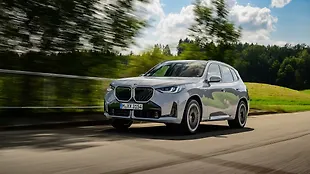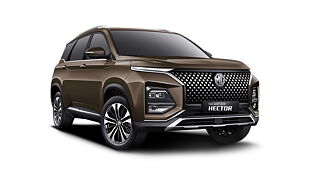Introduction
Over the last three months, our MG Astor has been a busy bee since it joined the CarWale long-term garage. Be it office commutes, regular shoots, or intercity drives, the Astor has done it all in the short period it was with us. But more importantly, with more than 30,000km on the odometer, it was one of the highest mileage cars we have ever had. And, as you must have read in our previous report, we planned on scrutinising the Astor with a finer lens into how it would fare with many kilometres under its belt. Let’s dive in and take a look at a few things we will miss about the Astor, and also some that we wished were better.
What we will miss about it:
The Astor stands as one of the rare long-term cars that we genuinely missed when it was gone. Its large and spacious cabin has great build quality, and even after driving it for 30,000km there was no major sign of wear and tear, be it the upholstery or the plastics all around. We did notice a few occasional squeaks here and there, but nothing too major.

During its tenure with us, when the Astor wasn’t hauling our crew to shoot locations and back, I had the pleasure of taking my mother and younger sister to various places. Mom isn't particularly car-savvy – she couldn’t differentiate between an Alto and a Wrangler (was going to say Wagon R, but Wrangler is just a big Wagon R for my mum). But every time the Astor turned up to pick her up, she was always happy to see it. She appreciated the seat comfort, red upholstery, and the large panoramic sunroof that made the cabin of the Astor feel much more premium.

As promised, I extensively used the ADAS in the Astor at every possible chance I got, and the hardware didn’t disappoint either. Now, I have experienced the ADAS in almost all the new cars that offer it. And the ADAS in the Astor, which was the earliest one to offer it in India, still holds its own. All the driver assist features worked well, be it adaptive cruise control or lane change assist.

You do instinctively tune out the blind spot warning on the ORVM after a certain period. Yet, I kept looking for those blinkers in all the other cars that didn’t have it. This also applies to other ADAS features as well. However, I did encounter one particular issue with autonomous braking, which I’ll discuss in the next section.

Astor’s touchscreen comes with inbuilt JioSaavn, which was quite helpful for times when your phone wasn’t connected and the radio was too boring. But we still couldn’t change and personalise the preset driver’s profile and in the same vein, the Astor AI bot wasn’t configured either. So, it couldn’t tell us a joke or help with the internet search. But the voice commands for media, sunroof, and AC worked just fine.
What we won’t miss about it:
Fuel mileage! Despite our best efforts to drive economically, the Astor never managed to surpass an average fuel mileage of over and above 8kmpl. The MID figures bumped up to 12kmpl on certain trips, but the overall fuel efficiency was still in single digits. This made the tankful range not more than 340-350km each time. And it cost around Rs. 4,700 for each tankful with a per kilometre cost of over Rs. 13.

In a technologically advanced car like the Astor, we sorely missed three crucial features – auto-dimming IRVMs, a wireless charger, and seat ventilation. The absence of the former was especially bothersome during intercity trips. Additionally, in scorching May temperatures and a fairly hot June, the lack of seat ventilation in the black leather interior was dearly missed.

Now, let’s talk about the autonomous braking. While the sensors accurately detected obstacles at risk of a crash and prompted warnings, the braking action itself felt inadequate. Moreover, the braking action, or rather the lack of it, often resembled driving over a massive rock that scratched the car's underbelly rather than a smooth autonomous braking experience, leading to confusion and distraction.

Also, if I have to nitpick, the ‘speed breaker ahead’ prompt comes up randomly and quite conveniently ruins the best part of the song you are singing along to.
Conclusion

After spending three months with the Astor, we were looking forward to seeing its service experience and cost, much like we did with the Hector back in 2020. However, we will have to save that for another time. Following the Astor, MG has already promised us another of their new car – it is teensy-weensy, eye-catching, and electric. Stay tuned for more on that in the next review. Until then, as I mentioned earlier, the Astor remains one of the few long-termers that will be missed after it’s gone.

Pictures by Kaustubh Gandhi



























